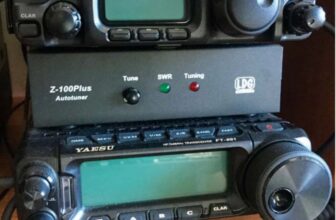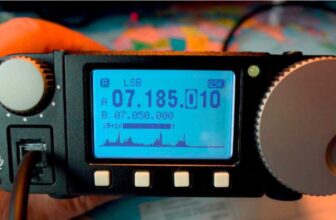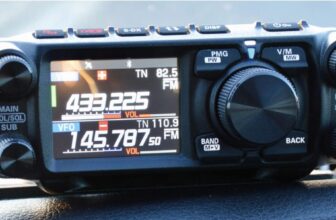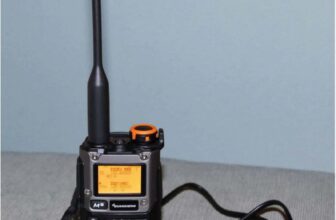Yaesu FT-710 Aess Review
Richard Constantine G3UGF gets to grips with an exciting new radio from Yaesu, Yaesu FT-710 Aess.
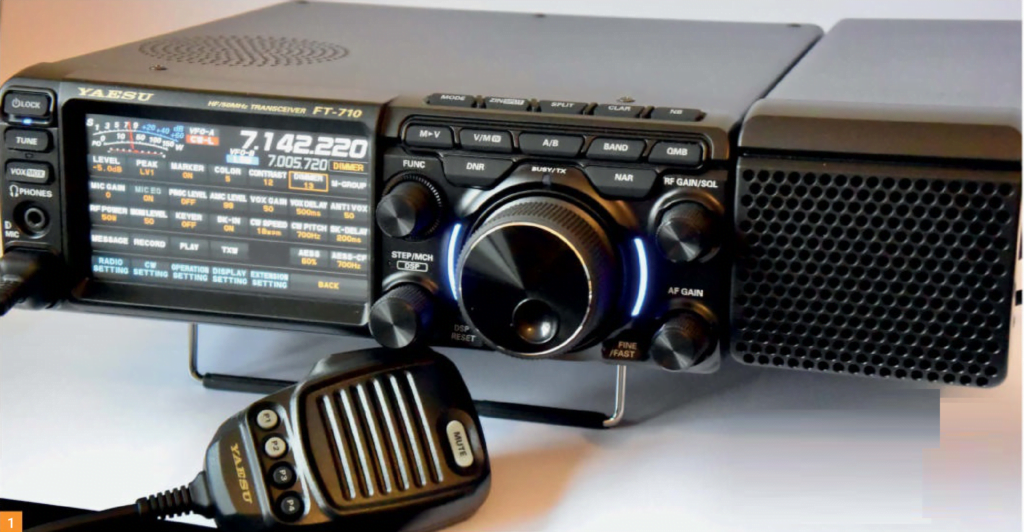
When the FT-710 Aess arrived on my desk, I was reminded of the 2010 RSGB Convention. In a packed to overflowing lecture room, I learned that simple, single-band SDRs connected to resonant antennas, though a black-art, actually worked!
However, wideband reception had problems. Simple designs are subject to front-end overloading and lack selectivity. As a result, broadcast and other interference can corrupt amateur band reception.
Back then, SDR designs were DIY projects linked to sound cards and PC Towers. It was prophesied that by now, the conventional desktop radio would be a thing of the past. How wrong can you be?
Paper books still massively outsell e-books. Amateurs haven’t abandoned their love of stand-alone radios, even if the inside has seen a complete makeover. Today, SDR has truly come of age. Advanced selectivity and digital filtering suggest that maybe the days of analogue superhet design are numbered.
You might well ask why has Yaesu released a true SDR transceiver, hot on the heels of its highly successful hybrid range… I’ll try to explain.
To understand where the FT-710Aess sits in Yaesu’s product range, you really have to first look at the hybrid technology of other models.
FTdx101D
(Take this slowly and read on…!)
The front-end attenuator includes ten precision, amateur band filters and five broadcast band filters, providing close-in signal rejection as a first stage.
Following these, the 101’s secret weapon is a motor driven variable capacitor/pre-selector system. It auto-tracks across the band, as the main dial moves. After that comes the receiver’s RF amplifier stage, the output of which follows two separate paths. The first, a conventional analogue/mixer /oscillator route that produces an Intermediate Frequency (IF), at 9MHz. Thereafter a selection of up to four switched, precision, conventional crystal filters can be used before signals pass through an analogue-to-digital converter (A/D) and enter the FGPA – Field Gate Processor Array (the clever stuff).
The second signal route from the RF amplifier passes directly from the front end into the same FGPA, via an A/D converter. Signals re-combine and processing takes place, hence the name hybrid design.
Note that the panoramic adapter is derived from the direct SDR route to give a wideband display.
FTdx10
(Stick with it…) Gone is the clever auto tracking preselector while the attenuator and 15 bandpass filters remain, before a similar hybrid receiver chain. The conventional IF route following the mixer now has only two costly, precision crystal filters.
The second route, a straight-through signal, A/D conversion connected to the FGPA remains.
Yaesu FT-710 Aess
(Allis revealed)
Gone altogether is the conventional analogue superhet receiver and the related crystal filters in the IF. Everything becomes digitally processed to create a similar effect. The input attenuator and the bandpass filters remain in place for selectivity.
Following the RF amplifier, the signal now feeds directly into two separate A/D converters and the outputs feed into the FGPA. One is a digital version of a mixer/oscillator/lF completely replacing the traditional analogue. The other a direct line to the FGPA as before. Operating at high speed, field gate arrays have thousands of re-programmable gates, are long lived, reliable, ideal for smartphone and amateur radio designers alike.
Quantisation and Dithering
I left one bit out. That is, when A/D conversion takes place, signal distortion known as quantisation error, is inevitable. The system is constantly trying to select the nearest digital stepped value to the otherwise smooth curve of the original analogue signal.
There’s bound to be a small difference. I find it helps if not strictly accurate, to imagine a sine wave signal that’s got a rough outline. Magnified, it verges on becoming a sort of lumpy square wave. Do away with the hybrid receiver section and clearly something has to be done. There are a couple of established things that help.
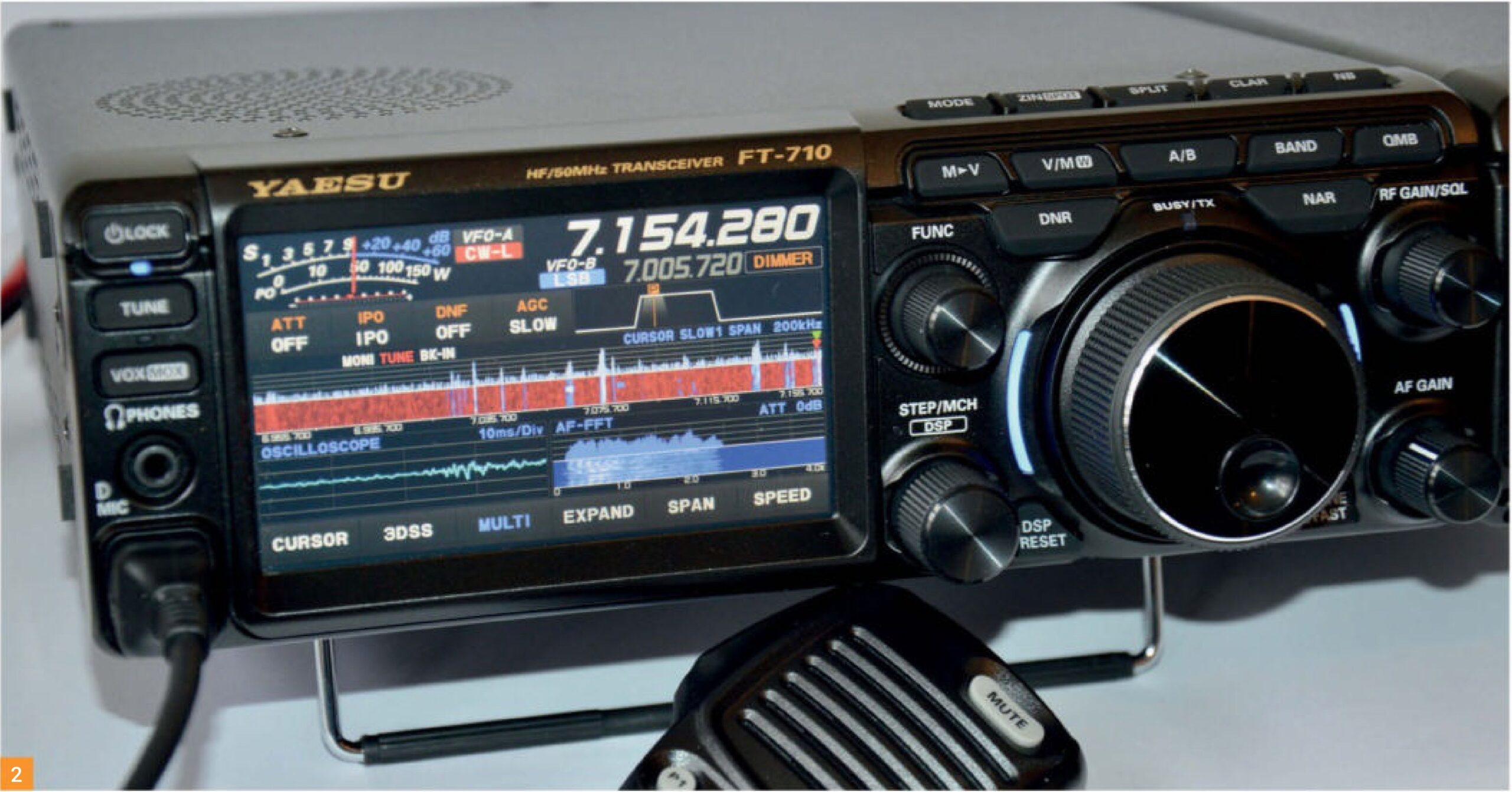
While I profess no detailed technical knowledge on how it’s actually done, the technique used here is dithering. Simply think in terms of a sort of random white noise type signal generated and fed back from the field gate array, into the incoming analogue signal lines. The FT-710 has a ‘dithering’ feedback loop to both A/D inputs to eliminate this problem. Safe to say, errors are minimised with further improved receiver performance.
Yaesu appears to have advanced their SDR designs in increments until they have been able to achieve a fully-fledged, clever SDR design. Don’t just take my word for it when the highly respected Sherwood Engineering test house rates it at number four in their current listings. It’s certainly no slouch, achieving in-band SSB/CW sensitivity in the order of 0.16 μV with its low-noise pre-amp on and VHF FM at around 0.2-0.25 μV.
Going fully digital means that QRM rejection using Shift, Width and Notch control, Noise blanker, Digital noise reduction Audio Peaking (APF) become flexible under software control.
The 32-bit, high speed floating decimal point Digital Signal Processor (DSP) makes many things possible. For example, filter edges can be shaped electronically for enhanced performance as and when required, while viewing everything on-screen.
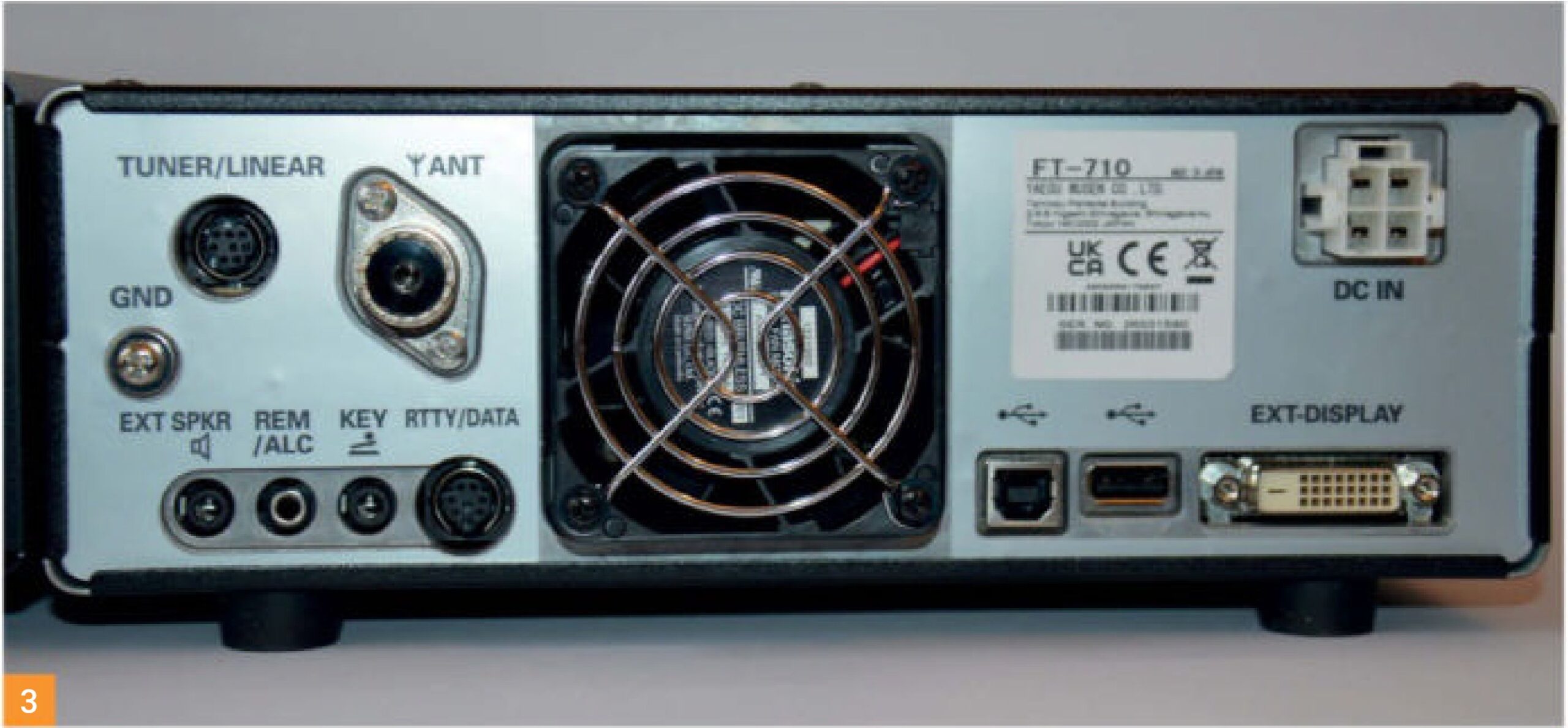
Photo 3: Rear panel View.
Those familiar with the current generation of Yaesu’s transceiver will already appreciate the way this radio looks and operates. With its additional speaker attached that we’ll come to later, it’s the same size as the FT-991 a.
Curiously, with the outboard speaker removed it has exactly the same footprint as a certain other ubiquitous SDR black box, but with a lower profile. I know, I have one and I’ve checked.
Operation
For those less familiar with Yaesu’s way of working, it has a colour touchscreen with an extensive palette of colour choices that operates in combination with some of the manual controls.
At times and despite the reasonable 11 cm (4.3in) TFT colour screen, with so many menu options up on the screen, it was at first too easy for my fat fingers to select the wrong thing. I then had to backtrack, wind and press the Function knob to highlight the menu of my choice, from the long list. With more use and controlled enthusiasm, touchscreen became a quick way to change things and to cope with such issues as band noise and interference.
TFT Screen and Waterfall Options
Everyone expects a waterfall display these days and I wouldn’t want to be without one. Touchscreen adds the convenience of seeing a signal first and jumping directly to it, without it disappearing before you’ve wound the VFO knob all the way across the band.
Yaesu like their on-screen 3D effect. You can see not only the signal in a standard X and Y, 2D waterfall, but also an additional Z axis, giving 3D depth to the display.
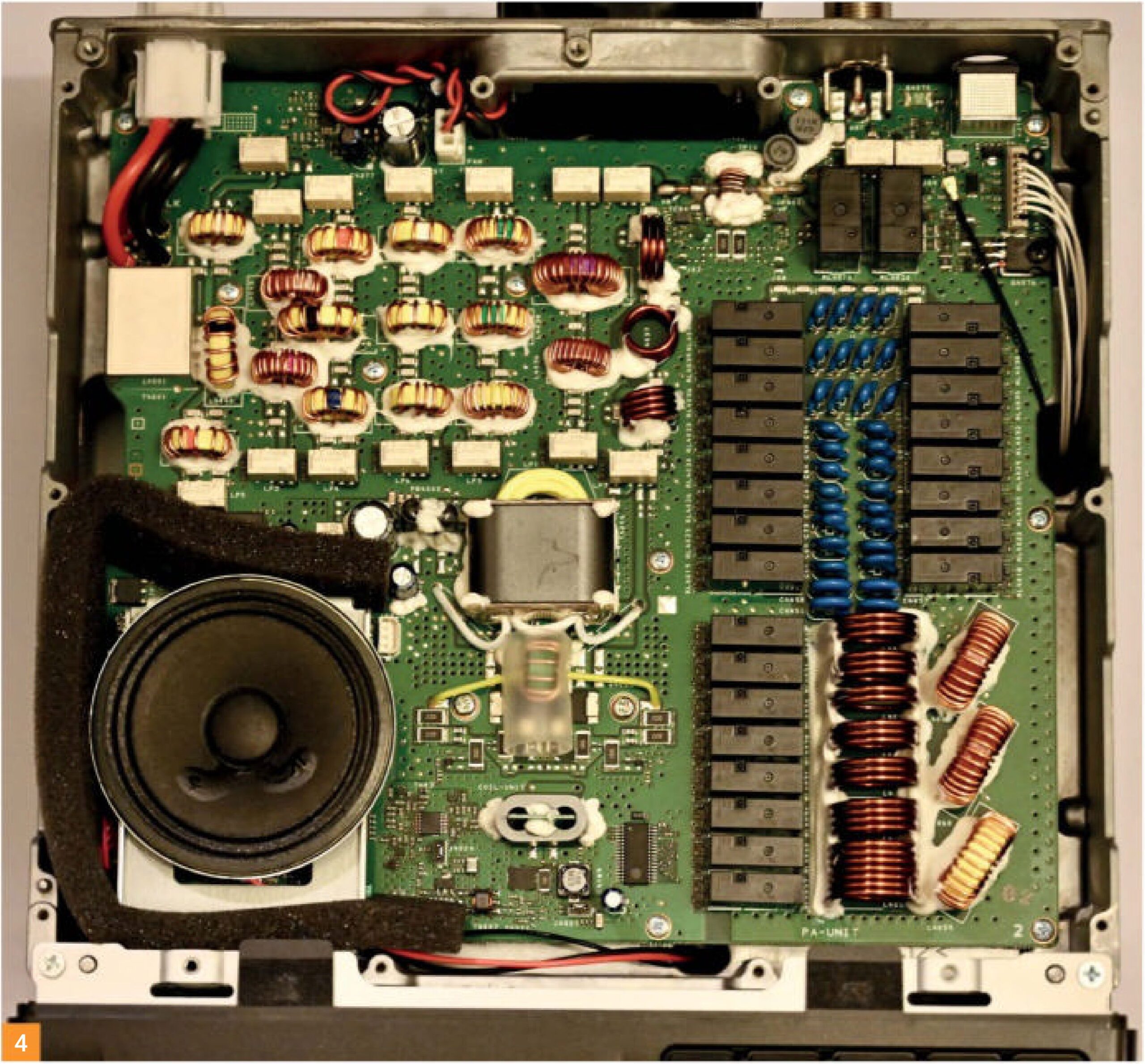
A spread graphic representation shows individual relative signal strengths and band conditions changing, over time. It’s feels like looking at the near past. My mind remains open on this feature. I can see the point if you’re hanging around waiting your turn in a pile-up or monitoring band opening I closing conditions on say, 10,6 or 4m. Yes, it does have 4m TX/RX, in the UK version.
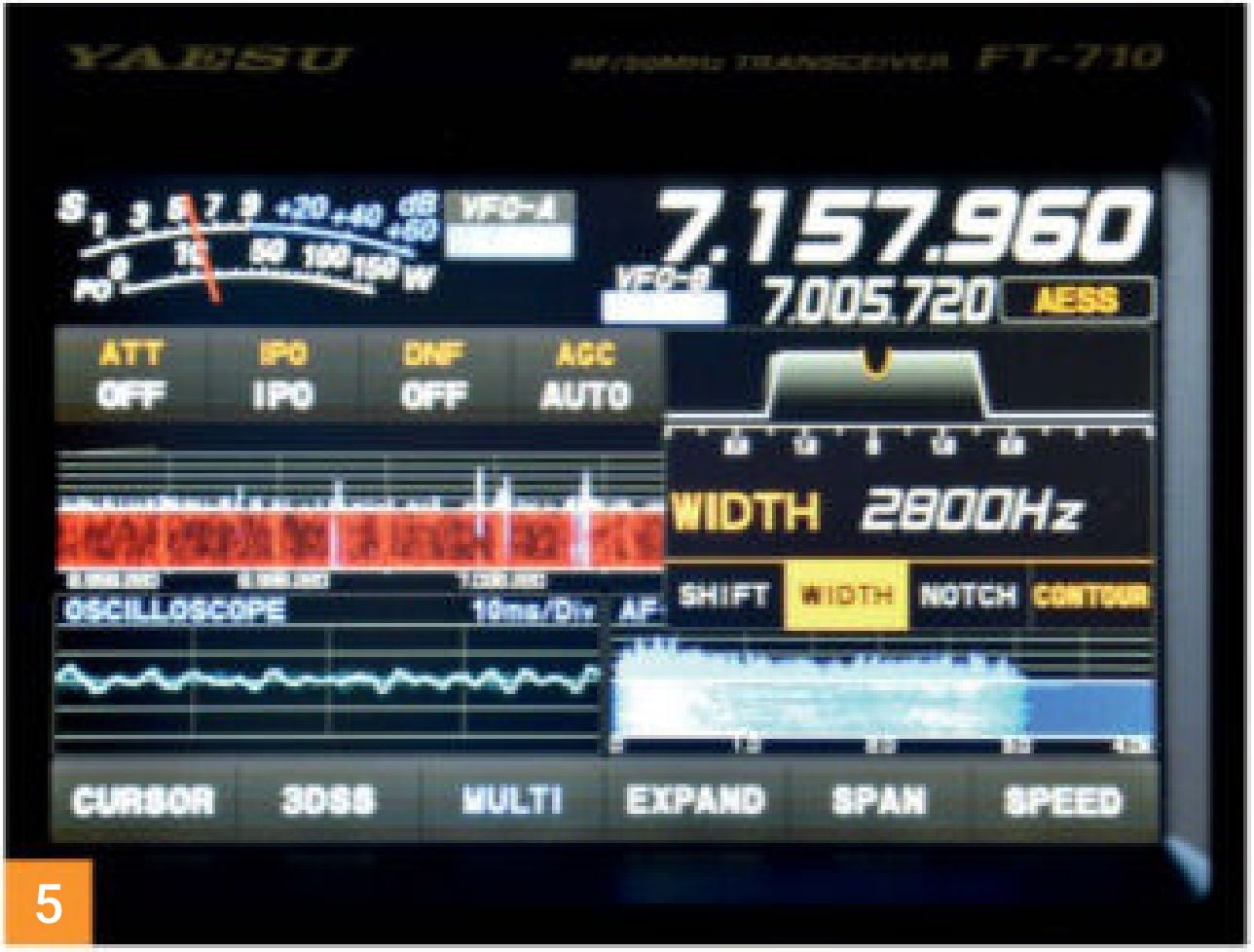
Incidentally, the radio has internal, user programmable, software settings for different worldwide frequency allocations. Enabling 4m TX and 60m comes under C2UK. If not already activated by the supplier, it’s a relatively straightforward button-pushing process to achieve. There’s an SD card slot on the left-hand side of the box, to back up all settings.
Just a thought… This radio may a be a strong consideration for travellers and overseas call holders.
You can opt to have the display clean and simple with say, A & B VFOs, mode settings and waterfall etc, or other features, in a sort of pick and mix fashion, allowing you to have more visual control over things such as both received and transmitted audio scope. There is so much to see, do and change that the handbook devotes some ten pages to this topic alone.
The screen can seem a little cluttered at first if you display too much information simultaneously. There is an option on the rear panel to connect a larger remote display.
I wondered why manufacturers still specify DVI-D sockets for radios when this standard has been eclipsed by HDMI, on modern external monitors. Was I missing something? The answer is, Yes.
Primarily it’s a licensing issue. Realistically, DVI-D has everything needed and adapter cables are available for all kinds of monitors. Here a strong word of caution. Folklore and fake news (the internet) says that some HDMI cables can damage your radio. What’s actually critical is that there should be no potential difference between the chassis earth of the radio and the monitor. Use only ‘earthed’ external devices monitors/ computers, etc. Avoid like the plague anything with a two-pin AC connector! Double check with a meter that there is 0 volts AC between the grounding of separate equipment’s before connecting anything!
Which brings me to the other connectors on the rear panel. There’s the usual range, including connections for remote external tuner/linear amplifier band switching, two USBs and RTTY/ Data.
The radio can be remotely controlled by CAT commands. You can also plug in Yaesu’s optional FH-2, desktop keypad, a great addition for contest calling from the memories.
It’s a sign of the times that the handbook has three whole pages devoted to interface cables and presetting everything for FT8, RTTY and PSK. These options appear on the pop-up Mode screen display together with a Pre-set legend, allowing data settings to be selected and pre-stored to a memory card, for different operating modes. While FT8 is flavour of the moment with many, don’t ignore PSK, simple quick and easy to set up. The popularity of data also appears to be making more band space for SSB/CW these days.
For those of us brought up simply twiddling knobs and listening to the effect of, Shift, Width and Notch, a visual representation activated by pushing in the combined Step/Memory control just below the Function control, is a real bonus This control takes a little practice to follow as there are four initial choices, including the audio contour function. Turning the control moves across the options on the inset screen. First you have to turn off the last used of the four options using a virtual on-screen switch, before you can move to another choice. Took me a while to figure that one out.
Press the Step/Memory control a second time and you can begin making changes. Once set, touch nothing and after a short time the inset screen disappears. At first, I found this all a bit awkward and less than intuitive. It just takes time to become familiar with it.
In normal use, the Step/Memory rotary selects 99 memories in five banks plus the Programmable Memory Scan (PMS), all of which can be labelled from the on-screen keyboard display.
Menus and Controls
One look at the main on-screen menu list should be enough to tell you that it would take me a week to describe what everything does. I do like the curved, cursor LEDs either side of the two-speed, main tuning control. If you engage the Clarifier or Split functions, they change from Blue to Red as a reminder.
Pushing the Function rotary control that’s going to get a lot of use, reveals a very full screen of choices. ‘Marmite’ is how some describe Yaesu’s menu system but stick with it, it works.
Rotating the Function control moves the cursor to the wanted area. Pressing the on-screen legend highlights the choice. Then it’s a case of using the rotary part of the same control to switch something on or off while watching the pop-up centre screen-in-screen, or go into the next submenu again for a further set of choices.
Given time, you can customise the radio to your own personal preference and style. At first, I found this a little bewildering, rather like trying to pat your head while rubbing your tummy. I soon realised that some settings are likely to be once only and saved to set up. Others just needed more practice.
In short, if you’re serious about this radio and don’t have experience of the other models mentioned, I definitely recommend first downloading the comprehensive 112-page manual from Yaesu’s website, before committing. It’s easy to follow, worth the study and it’s free (print out double-sided and save the planet).
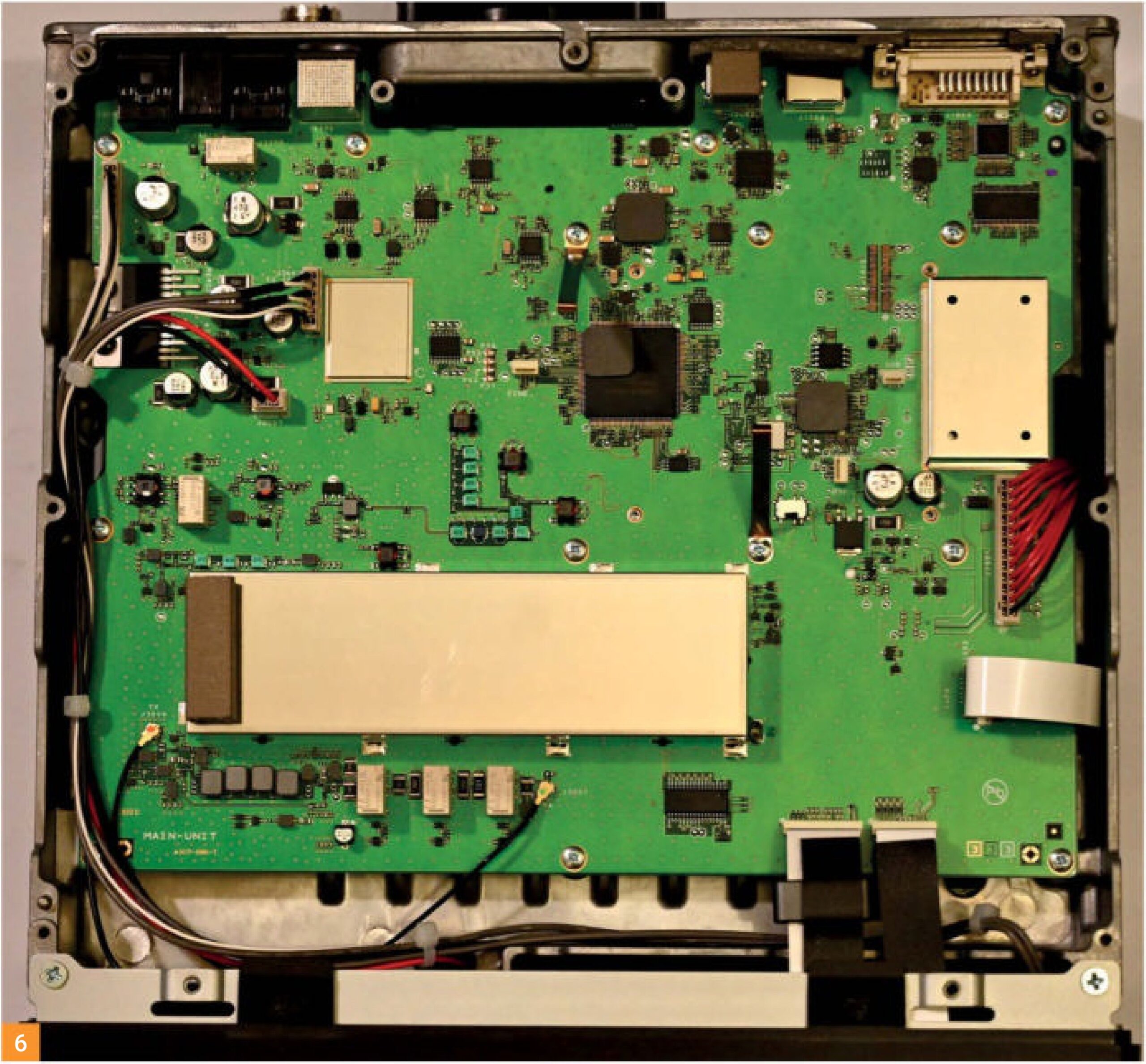
Aess-Acoustic Enhanced Speaker System
What’s really different about the FT-710 Aess and why you get a second speaker is that it’s all about audio profiling. If the old expression ‘Armchair copy’ means anything to you or spatial sound (not stereo), then you’ll get a flavour of what Acoustic Enhanced Speaker System (Aess) means.
Before using it, I considered it a potential gimmick. However, the more I used it, the more I missed it when I didn’t. You can adjust and balance the audio between the internal and external speakers. If you also adjust the bandwidth and digital filtering, the effect can be quite surprising.
I found it delightful to get rid of that awful and annoying bass rumbling noise you get from stations with over generous amounts of spreading EQ on their transmitted audio. Why do they do that?
The SP40 extension speaker has two wall hangar type slots, on each side, initially blanked by bungs.
Special, collared shank screws are provided that fit to pre-tapped holes on either side of the transceiver. The speaker slots on or detaches as required. Right hand gives better effect due to greater separation between the internal speaker and the extension. The on-screen menu system allows for adjustment of both balance and frequency cut-off.
A little disappointingly, the speaker has no feet. It has no tilt stand to line up with the radio, if separated. You can of course easily remove it to make the package smaller for travelling or /P.
On the good side, comparing apples with apples; for a proper comparison with other radios, you have to add around £ for an extension speaker. This one’s included in the price.
Now for the Transmitter
Power adjustable from 5 to 100 watts, carrier suppression in the order of -60db, 25 watts carrier AM/FM and excellent harmonic suppression at -50db, what’s not to like?
The chunky SSM-75E, 600 ohm electret hand microphone delivers crisp audio. It’s nice to hold, has four function keys and that all important mic-mute button for those unexpected moments. It’s only short of one thing, weight to give it that extra gravitas.
I’m sure that many readers will be conversant with variable speech processing and compression. This radio also has an internal ‘Parametric Microphone Equaliser’. There’s so much to consider that on-air adjustment isn’t a great idea. Dummy load, headphones and a separate receiver is perhaps the way to go. Two independent sets of settings are possible, processor on or off. Bring up the on-screen scope display, engage the recording facility that covers both TX and RX audio and you can both see and playback changes. Operators can adjust centre frequency, enhancement and bandwidth. Don’t overdo the width and the bass… please!
AutomaticTuner
Yaesu have a long history with automatic tuners and this one works well. It has a few more inductors and capacitors to choose from than some others I could name, all helping with selectivity and performance. It covers the usual impedance range of 16.5-150 ohm on HF and 25-100 ohm on VHF, for coaxially fed antennas.
VSWRs of 2:1 or less are stored in memory. Moving up and down a band it logs settings every 10kHz. Re-tuning as the operator goes up and down the band means there’s rarely the need to press the Tune button repeatedly, in the same band. VSWRs of more than 3:1 are highlighted on-screen automatically.
Other Features
As you’d expect, there’s a full range of options for CW, full and semi break-in, manual, bug or iambic keying and speed range of 4- 60 wpm.
In the menu there’s a nice little option that brings up a tuning bar in the lower meter scale. It makes for easy matching of CW pitch to the received signal. Nothing worse than being slightly off frequency and fruitlessly calling, when you’re not being heard.
Of course, there are no FM repeaters on 4m but there are some excellent and little used 6m repeaters in the UK, with amazing range, not forgetting 10m under the right conditions. Therefore, it’s nice to see the FT-710 Aess has CTCSS tone capability and everything can be stored in memory for quick access.
What do I Think?
I’m so pleased that Yaesu UK gave me the privilege of an extended and longer than usual, loan of this new radio. My early impressions have definitely mellowed over time. I miss central VFO knobs. They are long gone and I’m left-handed.
I’m impressed with the performance of this all SDR transceiver, in a small package. Verging almost on feature and option overload for both RX and TX, you definitely get much for your money.
Due to its low profile, for me it worked best at shelf height rather than desk height. Its good looks match its performance and for me it scores 4.8 stars. If I was a serious contester, wanted that extra very weak signal performance or bragging rights, I might just be a bit tempted to spend more money.
That said, it’s a great compact, transportable, high scoring, multi-function radio but, come on Yaesu, why charge me extra for a carrying handle? Not a fortune I know but, it just takes the edge of an otherwise really lovely radio. In the good old days, the original FT-101 had a carry handle as standard and weighed at least four times as much.
When you purchase through links on our site, I may earn an affiliate commission. Here’s how it works.






